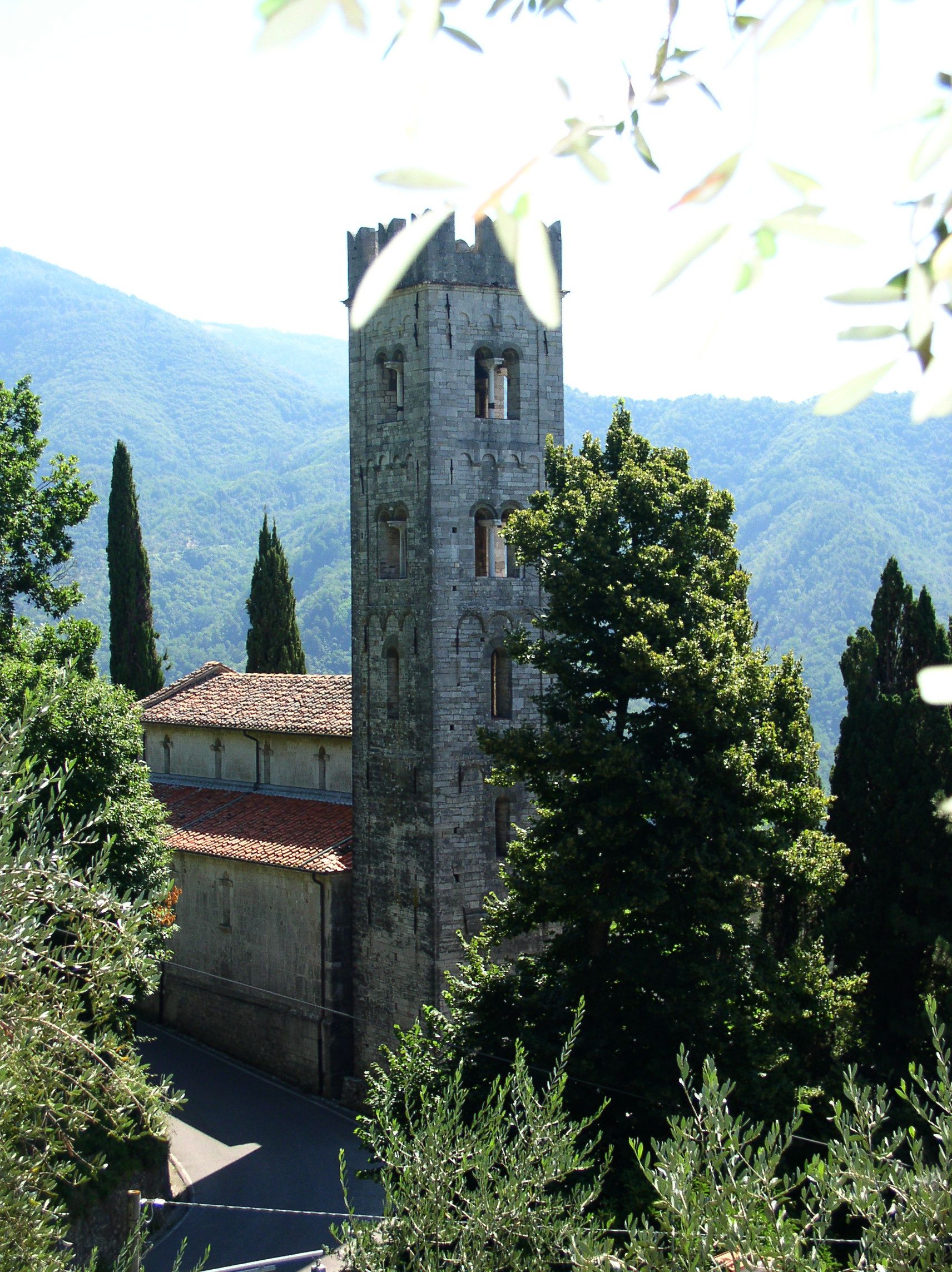ADDRESS: Via Pieve di Brancoli - loc. Pieve di Brancoli
TELEPHONE: 328 5331903
EMAIL: pievedibrancoli@gmail.com
SITOWEB: www.pievedibrancoli.it
The church of San Giorgio di Brancoli is located in an enchanting panoramic position in the gentle hills leading to the Pizzorne plateau.
The churchyard opens up to the Lucca plain crossed by the Serchio river and with a clear sky it is possible see the typical profile of the bell towers inside the walled city of Lucca.
Consecrated in 1062 by Pope Alexander II, in 1097 it became a parish church and began to carry out the most important liturgical functions for the increasing local community.
Its strategic geographical position with direct access to the Serchio valley, adds importance to the socio-political scenario of Lucca, at the center of political struggles for the conquest of the Garfagnana area until the end of the 13th century.
A masterpiece of Romanesque art, imposing and austere, it is also extraordinarily rich in the interior sculptural furnishings.
Built in the second half of the 11th century, it has a basilica shape with three naves marked by columns and pillars with classical capitals, with a semicircular apse and a massive crenellated bell tower next to the facade. The wall face is made of white limestone from Santa Maria del Giudice with perfectly squared ashlars arranged regularly.
A curious detail was found in the architrave of the south side portal, decorated with a relief depiction of an enigmatic character with large open arms and huge hands, called the "Brancolino", still being a mystery today.
Inside precious artistic treasures are kept: a marble ambo (depicting the countess Matilde di Canossa, benefactress of the parish) with four columns, two of which resting on lions fighting against a warrior and a dragon, a glazed terracotta of Andrea Della Robbia depicting Saint George and a dragon (1495), a painted wooden Crucifix from the Berlinghieri school (13th century), a finely decorated octagonal baptismal font (12th century) and a fresco of the Annunciation by Giuliano di Simone ( 14th century).
Itinera Romanica (Romanesque itineraries)
Today the church is an important stage on one of the many Romanesque itineraries that characterize the Upper Tyrrhenian area, between Italy and France. Naturalistic, historical and cultural itineraries that cross small hilly villages and rural environments along ancient paths, where minor religious architectural styles in churches, basilicas, parish churches and chapels can be rediscovered and enhanced.

